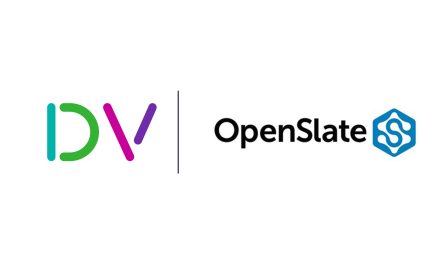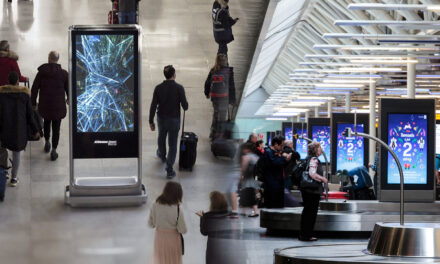Gamification is a powerful tool that empowers startups of all growth stages to achieve their objectives in a more fun manner.
Whether your startup involves a mobile app or a direct-to-consumer (D2C) web page, the challenges always come in threefold: Driving user acquisition, enhancing user engagement, and boosting user retention on your platform.
The common solution for these challenges lies in understanding your target segment’s behavior. For mobile app industry players, for example, they have to bear in mind that users typically have 40 apps installed on their phones and out of these apps, 89% of their time is split between 18 apps[1]. What it means is users are unlikely to spend an equal amount of time on each of the apps they have downloaded and they would expect companies to go ‘the extra mile’ when their experience is concerned.
In short, to ensure sustainable success, you need to give users more reasons to appreciate your platform. Indeed, there are many equations that come to the ‘how’, and one of many strategies that appear attractive to startups is gamification.
Gamification: Is it merely a buzzword?
If you’re new to this term, gamification is all about bringing game mechanics and elements into non-game ecosystems. Whether you realize it or not, you have been exposed to some forms of gamification in the early stage of your life.
If you were a boy or girl scout when you were a child, you might recall earning badges for demonstrating certain skills or attitudes. These badges then motivated you to remain dedicated to doing certain tasks to collect more badges and gain pride. This example pretty much illustrates how gamification works: It taps into humans’ basic instincts, triggers various human emotions and engages them in a certain activity that will give them their desired rewards.
So, is gamification merely a buzzword? The short answer is no. The practice of using game elements has already passed the hype cycle and is beginning to show signs of robust growth. Starbucks, for example, saw an increased revenue of US$2.65 billion, after rolling out its rewards program which allows customers to gain stars with every purchase using the mobile app; the more stars earned, the more rewards redeemable.
The science behind gamification
Okay, so these examples show what gamification looks like in the real world. But what makes it so powerful? What makes you, as a customer, want to commit yourselves to complete certain tasks to earn rewards? Author Yu-kai Chou precisely explains it using the Octalysis framework – an octagon-shaped behavioral framework with 8 Core Drives representing each side.
Within Octalysis, the Core Drives on the right are Right Brain Core Drives, being more related to self-identity and are dubbed as intrinsic motivators. Whereas the Core Drives on the left are Left Brain Core Drives, being more associated with logic, and are commonly associated with being extrinsic motivators. This is important because many companies aim to design for motivation based on Extrinsic Motivators, such as giving users a reward at the end. However, studies have shown that once you stop offering the extrinsic motivator, user motivation will often decrease to much lower levels than before.

And why is that? Well, in essence, gamification is a design that places the most emphasis on human motivation, triggering emotions that are linked to positive user experience as opposed to pure efficiency. Users develop an emotional bond through ongoing interactions that hopefully lead to satisfaction, loyalty and engagement. Creating such a gaming experience within a non-game app will instantly make users feel more engaged with your brand, thus creating a powerful connection, but is one that must be maintained over time.
Beyond the buzzword: Gamification done right
Gamification is beyond quests and badges. It is a craft that requires the combination of an in-depth understanding of game designs and the science of consumer behaviour to be done right. When the right mix is achieved, it can serve as a powerful tool for creating an engaging experience, leveraging the need to achieve, and driving meaningful engagement in an everyday context in order to help brands achieve specific marketing objectives.
Although there are many successful gamification examples that have cleverly incorporated game mechanics such as progress bars to provide real-time feedback and increased engagement, you have to wonder how in the world could you possibly make the most mundane tasks intrinsically motivating. As the application of gamification elements proliferates across different market segments, startups must be innovative in the way they approach gamification to acquire, engage or retain users.
Let’s start by discussing how you can expand your user base with gamification. For years, businesses and their marketers have been tapping on the referral programme to attract more users for various reasons. First and foremost, customers acquired through referrals have a 37% higher retention rate and 81% of consumers are more likely to engage with brands that have reward programs[1].
Indeed, the effectiveness of such a strategy translates into a clutter of referral programmes that surround users and to thrive, startups should think out-of-the-box to make such programmes more exciting by tapping on social elements such as leaderboards and team quests. That way, existing users will feel more motivated to invite friends to complete a task together to earn attractive prizes and/or a top spot for their team.
Now, let’s talk about user engagement and retention.
Imagine that you are currently queuing at a coffee chain. These might be the reasons why you keep coming back to this chain: Firstly, it is most likely due to its convenience – it’s near to your home, university or office; Secondly, you like the coffee’s taste, and; Thirdly, the price is justifiable for you.
The question is: What if there is a newly opened coffee chain that can offer the same convenience and product quality at a more affordable price? Truth is, you will most likely switch to another brand if there is no emotional factor that binds you with your go-to coffee chain.
So what is this emotional factor? Now, imagine that your favourite’s coffee chain has a mobile app where your e-membership card is stored and you can earn more points as you buy more coffee and win in the games within the app.
Will you switch to another brand if the price gap is still reasonable? Probably not, as you have invested significant time into the loyalty programme and are afraid of losing the points you have collected and the rewards appear attractive to you.
That is why gamification appears attractive to even a more mature startup and multinational company. It does not only keep the loyal users close, but strategic contextualisation of the games within the app can have powerful impacts on sales. For instance, the memory-matching game that features a coffee chain’s offerings can interest users to try out different drinks that it has on its menu as they become more aware of such offerings and eventually, purchase them.

Another gamification strategy that works to enhance customer retention is instant rewards. If your startup has a mobile app, then rewarding users with points for daily check-ins or daily lucky draws is a strategy that is worth considering to motivate them to return to their app and spend some time there to take the actions you desire at last.
Long Story Short…
Gamification is a powerful tool that empowers startups of all growth stages to achieve their objectives in a more fun manner. However, a successful app or web gamification strategy is not just about design and development. Its main goal is to acquire, engage and retain more users, and thus having the right mindset is key to successful gamification.
Whatever stage your startup is at, the most important thing to remember is that it’s an ever-evolving process. Read reviews and user feedback to understand what users think of your platform and its features – then, take that feedback to heart. A platform that is immersive to the users it serves will be one that succeeds in the long run.



















